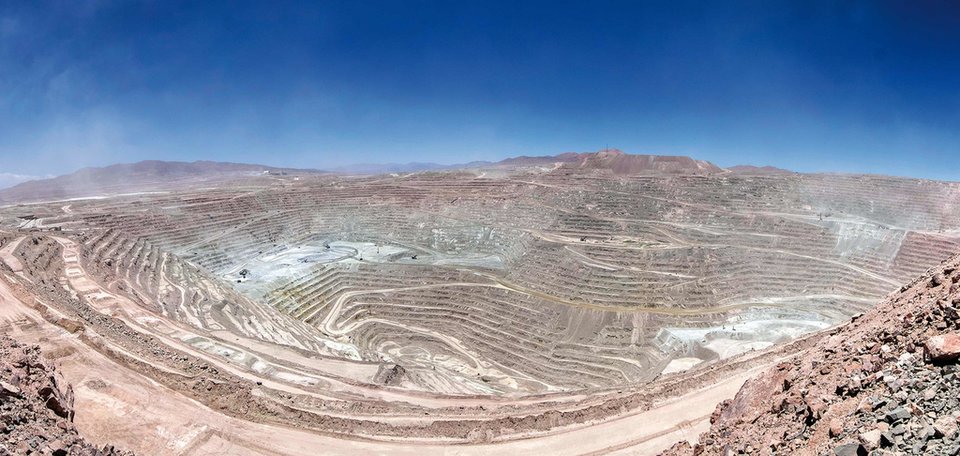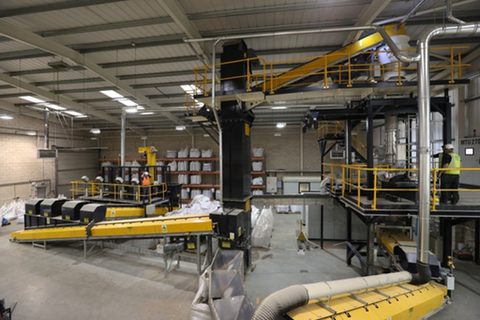MicroHammer: how microwave energy could transform the mining industry
A team of scientists has won the prestigious Colin Campbell Mitchell Award for their MicroHammer project, an ore pre-treatment process that uses microwave energy to eliminate inefficiencies. JP Casey finds out more about its potential in mining
Scroll down to read the article
From the wiring in buildings to the alloys in US coins, copper is an integral metal to much of the world, and reliance on copper is only increasing. The International Copper Study Group (ICSG) reports that global copper production, from primary and secondary sources, increased from 20.1 million metric tonnes (MMT) in 2012 to 23.4MMT in 2017.
Mining copper can also be a hugely and consistently profitable endeavour for those involved. BHP’s Escondida operation, the world’s largest copper mine responsible for around 5% of the world’s total production, posted profits of over $1bn for the first six months of 2018, despite a workers’ strike threatening productivity just months earlier.
Yet the process of mining copper remains inefficient on the global scale, with up to 5% of the world’s electricity production currently being used to grind rocks in mineral processing plants. The ICSG also reports that the world’s copper mines were operating at 84% of their total production capacity in 2017, leading to fears that we will reach ‘peak copper’, the highest level of copper production possible, beyond which demand will outstrip supply.
This year, however, after two decades of research, a multi-disciplinary team was awarded the Colin Campbell Mitchell Award from the Royal Academy of Engineering in the UK for their work on MicroHammer, a copper treatment process that uses microwave technology to make copper extraction far more efficient. The developers have demonstrated the effectiveness of their concept at a pilot site, which can process over 150 tonnes of rock per hour and aim to continue to scale up their operations.
BHP's Escondida mine in Chile.
Credit: BHP

The MicroHammer process
“It's very different from conventional extraction techniques,” says Professor Sam Kingman from the University of Nottingham, who led the team. He describes his work as a “pre-treatment process” that is applied to copper ore before it is passed through grinders.
“We expose the ore, as it flows through the process, to the microwave treatment for a very short period of time, and what happens is certain mineral phases within the ore heat in response to the alternating electromagnetic field. This heating creates stress, which creates fractures within the structures of the material.
“And when the ore is passed through the conventional grinding circuit, what we find is, because we've created microfractures within the structure of the material, that we produce liberation more at the native grain size of the ore, rather than at the size of the smallest grains, which is what you would find in a conventional circuit.”
The result of this microfracturing is that much coarser ore can be processed than in traditional operations; Kingman estimates that the minimum size of ore that can be processed after the MicroHammer treatment is 100 microns smaller than the minimum ore size of bodies that are not exposed to microwaves.
In addition to lowering the overall energy consumption of the process by around 30%, the technology dramatically reduces the amount of waste ore – grains that contain copper, but which are too small to be conventionally processed – that is fed into processing plants. This effectively opens up more of the world’s copper reserves to treatment, and could delay the arrival of peak copper.
“The real prize for the mining companies is increased throughput on existing capacity,” says Paul Burleigh of industrial manufacturing company Teledyne e2v, which was involved in the engineering aspects of the project. “The grinding circuits are multi-hundred million to billion dollar assets, so this is a way of effectively getting more throughput in an existing capital asset. Energy per tonne is down, but the big prize is in throughput capacity for the grinding circuit.”
Kingman and Burleigh’s teams were joined by individuals from US engineering firm Jenike & Johanson, which provided some of the hardware for the pilot operation, while the entire project was funded by mining giant Rio Tinto, which first backed Kingman’s PhD research into the technology in 1996, and has been involved ever since.
“We started to work seriously on this in 2009, 2010,” says Kingman of Rio Tinto’s involvement. “They provided the money, but they also provided a real industrial focus and industrial drivers in terms of the requirements of the technology to work in a real operation.”
The result of this microfracturing is that much coarser ore can be processed than in traditional operations

The MicroHammer pilot.
Credit: University of Nottingham and Teledyne e2v
Gold is typically processed at a rate of 500 tonnes per hour… so it could be easier to introduce the technology to gold operations
The future of microwaves: moving to a full-scale system
Kingman’s team has designed systems that could continuously process 3,000 tonnes of rock per hour, 20 times more than the pilot plant, which is the limit of what Kingman considers to be a financially viable operation. He says that when working on the system, the team developed the concept on a full-scale system first, and only began working on a smaller scale when it was time to begin construction of the plant. This approach, which always kept one eye on the full-scale goal of the project, means that working on a larger scale isn’t a huge challenge for the team, and that it becomes a practical engineering challenge, rather than a theoretical academic one.
“If we couldn't envisage what a full-scale system looked like, then there was no point in supporting the earlier development of the technology, and we've done that,” says Kingman. “We've had those concepts ready, we've validated the simulations.
“This is why the involvement of Teledyne e2v was so important; it becomes an engineering project to design microwave hardware to work in the mining industry, and microwave hardware traditionally has not been used in the mining industry. A lot of the work that Teledyne e2v did was to develop the technology in microwave hardware that could work in the mining industry in a very robust, harsh environment.”
Kingman was also extremely positive about the future of MicroHammer, saying that his team is in talks with a number of companies who are interested in scaling up the pilot plant, and turning those large-scale ambitions into reality.
He also thinks the future of the technology could lie in other minerals, naming gold and zinc, which have lower throughputs than copper, as minerals that could be processed on a larger scale following the microwave pre-treatment. Gold is typically processed at a rate of 500 tonnes per hour, compared to up to 15,000 tonnes per hour at the largest commercial copper projects, so it could be easier to introduce the technology to gold operations.
Both Kingman and Burleigh named “sustainability” as one of the most significant achievements of MicroHammer. “It creates a step-change capability that can go a large way towards enabling the industry to produce what the world will need going forward,” says Kingman.
“I agree,” says Burleigh. “It's going to enable deposits that aren't economic at the moment to become economic; it's going to enable us to explore waste material from the past, which couldn't be processed; it's going to enable us to look at ore bodies, which are too hard at the moment for processing.”